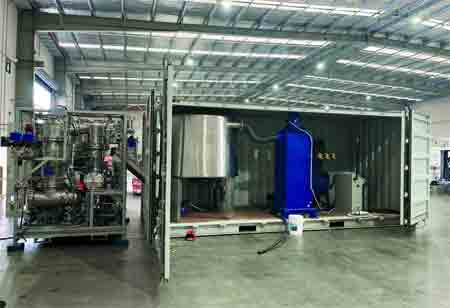The digital model is converted into a real object using a 3D printer.
FREMONT, CA: 3D Printing is manufacturing a 3D object from CAD data. It is also called additive manufacturing, produced by locating consecutive layers of material. A 3D model can be developed from scratch with 3D modeling software, or a digital model of an object can be made with a 3D scanner. The digital model is converted into a real object using a 3D printer.
Conversion Of The Chemical Sector Through 3d Printing
3D Printing is a creative technology that the chemical industry has already incorporated. Since its commercialization in the 1980s, it has been developing, and its execution in the chemical industry has grown.
This is because of the following cases:
1. The lowering cost of the 3D printer in the chemical industry because of cheaper raw materials.
2. New 3D printers can adapt more different materials.
3. Quicker printing speeds.
4. Ability to create complex geometries
APPLICATIONS
A 3D printer is utilized in the chemical industry for research and development (R&D), manufacturing, upkeep, and processes.
RESEARCH AND DEVELOPMENT
3D Printing has improved the Research and Development (R&D) cycle via onsite prototype printing. Prototypes enable smooth manufacturing, testing, and finalizing. They also lower the time to market (TTM). More 3D printing materials will be created within the chemical industry, giving the right formulas designed for their creation.
MANUFACTURING
3D Printing, also called additive manufacturing, reduces wastage by employing the necessary material. 3D Printing facilitates procedures, the quickening of design cycles, faster operations, and faster takeoff to the market (TTM). With a 3D printer, lab equipment can be printed economically, like custom-designed laboratory containers, which trial chemical reactions.
UPKEEP AND PROCESSES
3D Printing is growingly being utilized for the management of plant assets. In the advent of an asset failure owing to an impaired part, the reserve part can be handily printed on the site and installed in time. In-house Printing of spare parts lowers inventory costs and boosts efficiency. Manufacturing operations are being feigned through the Printing of prototypes.
ADVANTAGES
3D Printing has been helpful in the changeover of the chemical industry. This is because 3D Printing encourages mass production, economic fabrication, smooth operation, prompt prototyping, and manufacturing.
CHALLENGES
3D printing technology has evolved over the past three decades and proceeds to develop further. Still, its general implementation will take time due to the limitations in materials science, supply chain digitalization, engineering techniques, and chemical industry improvements.
Intellectual property security has been a general unresolved problem. Property like 3D digital blueprints could be either hacked or leaked. Aside from digital files, imitations of a product shielded under patent laws, copyright, and the trademark could be simulated via 3D scanners.
SCOPE
New technology is advancing to 3d printing technology, where 3D printed objects design an extra dimension, which can change environmental parameters like temperature and light. This technology is called 4D Printing, and the materials concerned are smart.

